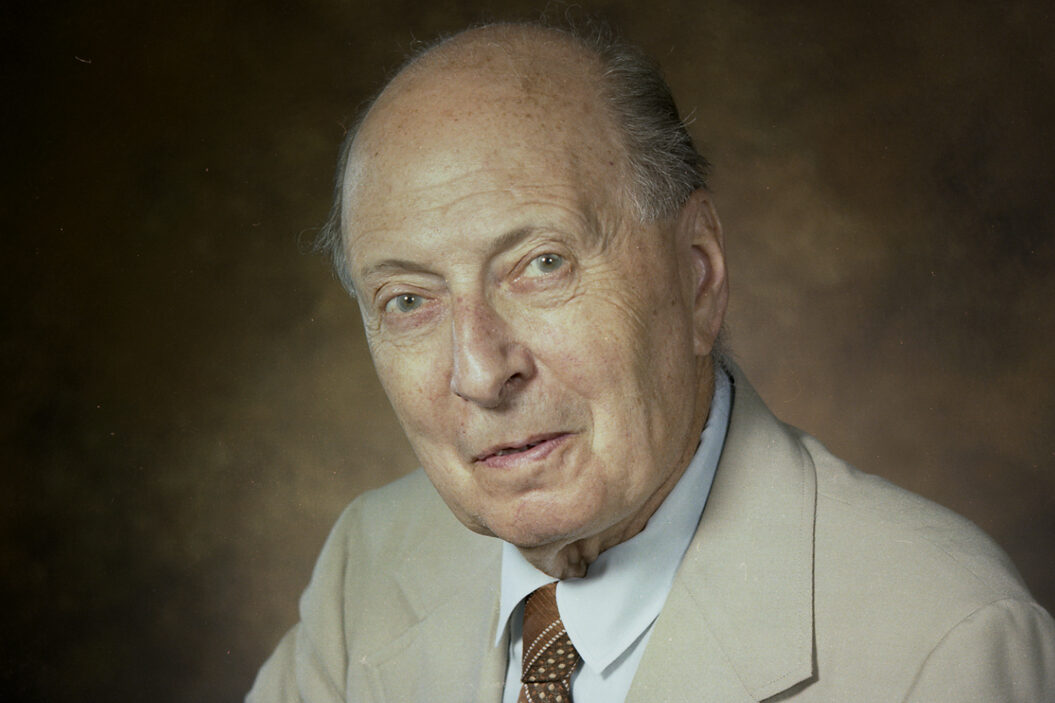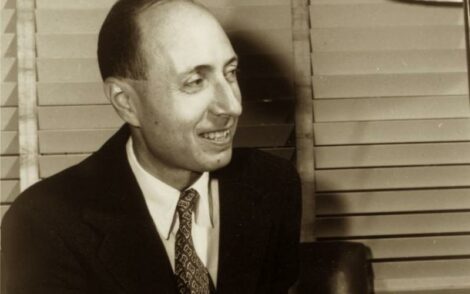
1963
Nobel Prize in Physics
Former ORNL Research Director Eugene Wigner won the Nobel Prize in Physics in 1963 "for his contributions to the theory of the atomic nucleus and the elementary particles ..."
Wigner’s influence at ORNL

Nobel Prize winner and former ORNL Research Director Eugene Wigner.
“Maybe there is something new here,” Eugene Wigner said to Clifford Shull when Shull described a problem he and Ernest Wollan had encountered with their early neutron scattering experiments.
Wigner was right, and subsequent development of the neutron diffraction technique earned Shull a Nobel Prize in Physics. (Maria Goeppert Mayer and Hans Jensen shared the prize with Wigner. For information on their work on the shell model of the atomic nucleus, see the Award ceremony speech for the 1963 Nobel Prize in Physics.)
Wigner was one of the celebrated European expatriates of the 1930s. He headed a group of theoretical physicists at the University of Chicago at the outset of World War II, and his contributions to the Manhattan Project coincided with his foundational work in nuclear engineering.
Contemporaries recalled his continental manners and unwavering politeness. When he walked into the cafeteria with Edward Teller—another of the expats—Teller barged to the front of the line, but Wigner took his place at the end.
To see the impact on science made by ORNL’s first scientific director, just look to the Wigner coefficient, the Wigner-Eckhart theorem, the Wigner effect, Wigner force, Wigner nuclides, the Wigner-Seitz cell, the Wigner-Seitz method, Wigner’s theorem and the Wigner supermultiplet. He also collaborated with J. Ernest Wilkins Jr., a prominent African American mathematician and physicist who worked at the University of Chicago during the Manhattan Project, leading to their discovery of the Wigner-Wilkins approach for estimating the distribution of neutron energies within nuclear reactors. And, of course, there is his 1963 Nobel Prize in Physics.
To know his impact on history, consider that he was instrumental, with fellow Hungarians Leo Szilard and Teller, in preparing the famous Einstein letter to President Franklin Roosevelt. The letter, which warned of potentially cataclysmic technological developments with uranium, led to the Manhattan Project.
His impact on ORNL is also immense. There are the lab’s prominence in nuclear reactor engineering, its Wigner Fellowships that have established top early career researchers in productive Oak Ridge careers, and the Wigner Distinguished Lecture Series, which brings esteemed scientists to speak at ORNL—including eight Nobel laureates in its first five years.
When asked where Wigner received his remarkable insights into physics and engineering, the late ORNL Director Alvin Weinberg remarked of his mentor: “He was smarter than everybody else.” —Bill Cabage